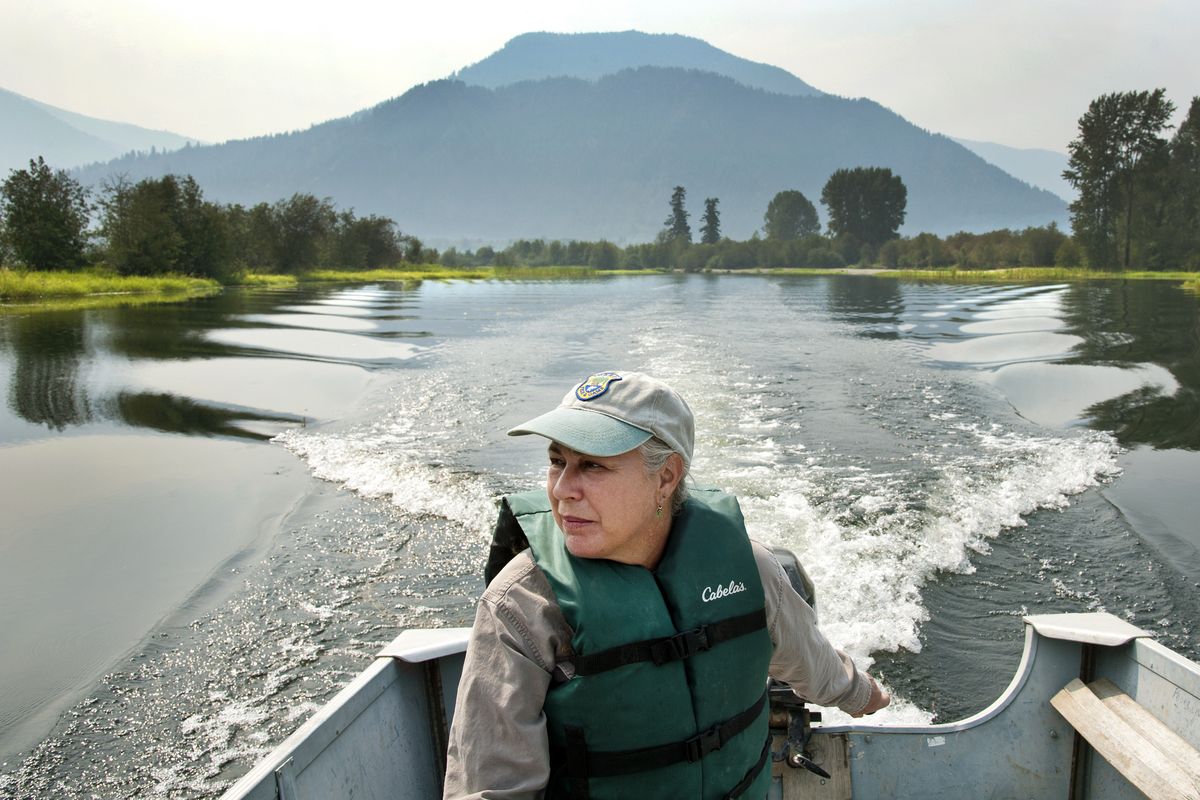Clark Fork Delta on the mend with $6 million project

CLARK FORK, Idaho – Katherine Cousins motored a small boat through the Clark Fork Delta’s back channels this week, pausing to watch a belted kingfisher swooping over the water near a stand of young willows.
The natural-looking scene is the result of $6 million worth of construction at one of Idaho’s most important wetlands.
More than 50,000 tons of rock have gone into rebuilding shorelines on the rapidly eroding delta. The half-mile peninsula that Cousins motored alongside is brand new. So were the willow trees, which were part of a massive planting effort on the newly created ground.
“In five years, the peninsula will be a big, green finger pointing into Lake Pend Oreille,” said Cousins, an Idaho Department of Fish and Game biologist. “You won’t even know that we did all this work here.”
The 5,600-acre delta is a mixing zone for the Clark Fork River and Idaho’s largest lake. It’s an incredibly rich biological area: More than 70 bird species use the delta, and Cousins has donned night-vision goggles to document six species of bats. But the delta was losing about 15 acres annually to erosion.
Over time, the magnitude of the loss was startling, Cousins said. Duck hunters told her that when they returned each fall, another piece of the delta had vanished.

The erosion is the result of dams. Two upstream dams owned by Avista Corp. trap the sediment that would allow the delta to continue to expand into the lake. Albeni Falls Dam, a federal project downstream, allows the lake levels to fluctuate by 11 feet annually. That benefits power production, but results in a water-logged shoreline that sloughs into the lake when water levels drop.
To mitigate for the dams’ impact, Avista and the Bonneville Power Administration each contributed $3 million to the delta restoration work. Idaho Fish and Game worked with state and federal agencies, consultants, conservation groups and the Kalispel Tribe to design the project.
For most of the winter, the delta was a massive construction site, said Brian Heck, a regional engineer for Ducks Unlimited, which was a partner in the project.
Two temporary bridges spanned the delta. Heavy equipment excavated new channels, fortified existing shorelines with rock and created two new peninsulas stretching into the lake. Underground weirs were installed to direct the current away from fragile shorelines.
When spring arrived, Cousins organized crews to plant 90,000 trees and shrubs in the restored delta areas.
“We wouldn’t have been able to do it without the volunteers and the school kids,” she said.
Sandpoint and Clark Fork schools sent busloads of junior high and high school students. But as May melted into June, Cousins’ anxiety level rose. The plants were in the ground, but the spring rains didn’t arrive. She was afraid that thousands of dollars of nursery stock would die.
The lake levels rose just in time to provide water for the plants.
The current restoration work addressed about 1,200 acres of the delta. Another $6 million of restoration work remains, which may be eligible for later federal funding, according to Idaho Fish and Game estimates.
On a recent delta tour, Cousins took pride in the work that’s been accomplished so far. She’s seen anglers trying out new fishing holes excavated for the delta restoration. Canada geese have discovered the new peninsulas, and ospreys are perching on new pilings near the water.
The silvery-green foliage of young willows is gratifying, too.
“That’s like new hope,” Cousins said. “They started even with this drought.”